- News
- Reviews
- Bikes
- Components
- Bar tape & grips
- Bottom brackets
- Brake & gear cables
- Brake & STI levers
- Brake pads & spares
- Brakes
- Cassettes & freewheels
- Chains
- Chainsets & chainrings
- Derailleurs - front
- Derailleurs - rear
- Forks
- Gear levers & shifters
- Groupsets
- Handlebars & extensions
- Headsets
- Hubs
- Inner tubes
- Pedals
- Quick releases & skewers
- Saddles
- Seatposts
- Stems
- Wheels
- Tyres
- Tubeless valves
- Accessories
- Accessories - misc
- Computer mounts
- Bags
- Bar ends
- Bike bags & cases
- Bottle cages
- Bottles
- Cameras
- Car racks
- Child seats
- Computers
- Glasses
- GPS units
- Helmets
- Lights - front
- Lights - rear
- Lights - sets
- Locks
- Mirrors
- Mudguards
- Racks
- Pumps & CO2 inflators
- Puncture kits
- Reflectives
- Smart watches
- Stands and racks
- Trailers
- Clothing
- Health, fitness and nutrition
- Tools and workshop
- Miscellaneous
- Buyers Guides
- Features
- Forum
- Recommends
- Podcast
TECH NEWS
Pro Bikes Special: Cervelo, Giant, Bianchi, Genesis, Merckx, Orbea, Condor, Felt and more
The recent Tour de Yorkshire represented a chance for British UCI Continental teams to rub shoulders with WorldTour outfits, and offered us a chance to take a good close look at differences in the bikes and equipmen of the teams competing in this inaugural stage race.
NFTO
A full fleet of Felt F1 race bikes for British team NFTO (it stands for Not For The Ordinary). This one belongs to Steele Von Hoff – note the yellow and green tape to hold the bar tape in place; he’s the Australian national criterium champion. We expect we’ll see him in that jersey in the Pearl Izumi Tour Series.
The Felt F1 employs a UHC Advanced + TeXtreme MMC carbon fibre which accounts for the rather unique appearance of the frame. The frames are decked out with Enve wheels, handlebars, stems and seatpost, Continental tyres and Shimano Dura-Ace Di2 groupsets.
Von Hoff is the only rider to use Rotor’s Q-Rings chainrings.
Most teams race on tubular tyres, and the big professional outfits have a huge number of wheels at the ready. Gluing so many wheels and tyres requires a lot of time, effort and patience, but it also ensures the quality of finish is exceptionally high. The smaller teams don’t have such a big setup behind them and the messy gluing of the tubular tyre on this NFTO isn’t something you’d expect at a high level professional road race.
Raleigh-GAC
Award for the most brightly painted bikes award goes to… Raleigh. The team certainly stood out with these vivid Militis team bikes.
They are the only team to use Cole wheels and one of the few to go with SRAM Red groupsets instead of the more popular Shimano Dura-Ace Di2.
Most riders have a national flag logo next to their name, if it’s on their bike – not Ian Wilkinson, who has a Superman logo instead.
Cofidis
French team Cofidis switched from Look to Orbea bicycles this season, and were racing the Spanish company’s latest iteration of the Orca race bike.
Orbea claims this Orca, which has been going for 10-years and has been through several significant makeovers, is the lightest yet, with a claimed frame weight of 900g (size 53cm). It’s a smart looking bike but a little less distinctive than previous models.
The Cofidis team are running Shimano Di2 groupsets complemented with FSA chainsets and finishing kit and Vision wheels.
Team Europcar
Sponsored by Colnago, the Europcar team have the choice of the C60 or the V1-r, the Italian company’s first ever aero road bike, for races.
We assume the team let the rider choose the bike they prefer, based on riding style, preference and their duties in the race.
The only team to use Hutchinson tyres, the mechanics told us they were running about 100psi on the final stage. Most bikes were equipped with Campagnolo EPS electronic drivetrains and Bora wheels.
Madison Genesis
This British squad were responsible for putting steel bikes back in the professional peloton when they formed a few years ago, but Genesis has since developed a carbon fibre frame - a first for the brand best known for its steel and aluminium bikes - for stage races like the Tour de Yorkshire.
While they still use steel bikes for shorter races and crits, the carbon Zero is lighter and stiffer and better suited to stage races, and puts them on a level playing field with the competition.
The Zero frame is fully kitted out with Shimano and PRO components.
Team Giant-Alpecin
This is American rider Lawson Craddock’s bike. He was out front on his own for a big chunk of the final stage on Sunday, and was joined by Nicolas Edet of Cofidis who was after climber’s jersey (and got it), then Ben Hermans flew past him on way to winning.
The team are split fairly evenly between the Propel, the company’s aero bike, and the TCR Advanced, which is starting to look a little dated alongside some of its rivals. This version of the TCR was launched in 2012 so in the bike world that means it’s well overdue for an update. We'd hazard a guess at there being a new model soon, simply because the Propel is fairly new and it released the massively overhauled Defy last summer.
One sign of the TCR’s old age is seen here, the Di2 wiring isn’t that cleanly internally routed, and the mechanic has had to apply a zip tie to keep the wire in situ. Most modern Di2 compatible frames have exit of the wiring at the dropout so it’s less exposed.
The routing on this Genesis Zero is a better example of internal Di2 routing, it exits the frame just above the dropout and only has a short run to the rear mech.
The team also use the Pioneer power meter (LottoNL-Jumbo being the other) with the head unit mounted in front of the handlebars. The Pioneer power meter is integrated into the latest Dura-Ace groupset and the team use Di2 throughout, with PRO - a componentry label owned by Shimano - supplying bars and stems. The team were also seen using the shallower C35 wheels rather than the more common C50s.
As well as supplying bars and stems, PRO also supply the team with saddles, and now offers= a wide range of shapes and widths so most preferences are catered for. A bit of electrical tape here to stop the valve rattling in the rim.
Top tube motivational message – “Keep Challenging” – bit more succinct than when they were 1T4i (briefly), which stood for "team spirit, inspiration, integrity, improvement and innovation," which they also had on the top tube.
Great Britain Cycling Team
This is the first time we’ve seen Great Britain's Cervelos at a race. The GB squad only recently confirmed Cervelo as a sponsor, but Josh Edmondson (who rides for the An Post-Chain Reaction team) was riding his usual Vitus Vitesse road bike.
The rest of the Great Britain squad were racing the latest version of the Cervelo S5, equipped with Shimano Di2 groupsets and Shimano wheels - one of the only teams to shun carbon fibre rims and go Shimano’s Dura-Ace C35 wheels with an aluminium brake track and carbon fibre fairing.
Not only that, but they were running Continental clincher tyres too. The aluminium rims would have offered superior braking performance in the changeable conditions of the race.
Customised Elite bottle cages are a nice touch.
JLT Condor
Yellow is the new pink, apparently. JLT-Condor were racing the Leggero Team Edition, in a slick new paint finish revealed for this season. The addition of the yellow is due to Mavic backing the team, supplying clothing, shoes and helmets. But not wheels...
The Leggero has been steadily updated over the years, and is still made in Italy using the tube-to-tube process. One of the few teams to be using Campagnolo Record EPS kit, they also use Campagnolo Bora wheels. We spotted a selection of deep and shallow section carbon wheels being rolled out for the race, with the mechanic telling us it was down to rider prference.
Also one of the teams using Fizik handlebars, stems and seatposts, along with saddles of course.
Condor was also one of the few teams where we spotted mechanical groupsets being used (aside from the SRAM teams which have no choice, the company doesn’t yet make an electronic groupset).
Not much in the way of custom touches according to the mechanic – but then we spotted Kristian House’s The Dude Abides stem cap. We love it. White Russians all round.
LottoNL-Jumbo
Celeste with touch of yellow in the Pioneer and bidon – well, we all know which rider that colour combination reminds fans of a certain age of.
We imagine a lot of Bianchi fans would kill to get their hands on one of those bike stands in the signature colour.
The Dutch team ride Bianchi’s Oltre XR2, its lightest and stiffest frameset, with slight nods towards aerodynamics with the integrated seat clamp, aero shaped seat post and tube.
Fully decked out with Shimano Dura-Ace Di2 and using the shallower Dura-Ace C35 and C24 carbon wheels, a good choice for the demanding course of the Tour de Yorkshire.
The team are supplied by FSA and this rider is using the integrated carbon fibre aero handlebar, with a K-Edge mount fitted.
They are one of two teams to use the Pioneer crank-based power meter. All of the bikes, except this one, were using FSA celeste bar tape.
Even the bottle cages are colour matched to the frame as well. Details.
One Pro Cycling
The newly formed One Pro Cycling team, founded by England cricketer Matt Prior, was one of three teams on Cervelo bikes at the Tour de Yorkshire. The team are mostly using Cervelo S3, rather than the newer S5, with Shimano Dura-Ace Di2 groupsets with the external battery fitted to the down tube, something we rarely seen these days as most bikes are now compatible with internal Di2 batteries.
They’re using the latest version of the SRM Powermeter using the latest Dura-Ace 9000 11-speed crankset. The bikes are finished with Enve wheels and 3T bars and stems, and Fizik saddles.
They are one of the few teams taking a leaf out of Team Sky's book and warming up before the stage using an Elite direct drive trainer.
A few of the team are using the newer S5, which was updated at the end of last year to produce a more aerodynamic and stiffer frame. A key feature of the new bike was the development of Cervelo’s own aero handlebar. The Canadian company reckons its saves 4.4 watts over a competitor’s handlebar (but of course doesn’t state which handlebar the refers to).
The hole in front of the stem means it can easily be fitted to a regular stem, so it’s more flexible than most integrated aero handlebars, and allows an out-front computer mount to be fitted.
Team Roompot Oranje Peloton
This Dutch team - described by PA announcer at the start of the final stage in Wakefield as the team that brought most fun to the race, they were very happy to be there - rides a Dutch bike brand, the lesser spotted Isaac, a company that only works with carbon fibre.
This here is the Element, a frame built using high modulus Nano Quad Carbon, which sounds very impressive, and produces a 970g frame weight for a size 55. The team outfits the frame with FFWD wheels and SRAM groupsets, with natty customised orange decals rather than the regular red graphics.
The team are sponsored by Selle Italia and all but one ride the Italian company’s saddles - one rider chooses a Fizik saddle, the mechanic telling road.cc that this rider had problems in the past and finally attributed it to his saddle, so brought one he was comfortable with to the team when he joined.
Topsport Vlaanderen Baloise
This Belgian squad are sponsored by Merckx Bikes and choose the range-topping EMX-525, a model that celebrates the number of race wins by Eddy Merckx.
The EMX-525 has been around for a few years now, I first rode it back in 2012, but it marked a new direction for the brand, one that places an absolute focus on handling rather than competing for the title of the lightest frame award.
It's a very angular looking frame, almost no curves at all.
Power measuring is standard for all teams competing at this level. Topsport Vlaanderen use Rotor’s crank-based power meter, and not the new bottom bracket spindle based system that was launched a little while ago. No Rotor oval rings on this bike though, it’s regular round chainrings.
The team use Shimano Di2, like the majority of the peloton, and use FFWD wheels along with Deda handlebars and stems. They also use Garmin Edge computers to monitor the power output from the Rotor power meter. That steerer tube could do with a trim.
Prologo’s CPC technology is designed to prevent your bum sliding around on the saddle, as well as boasting claims about increased vibration absorption.
Only the main race bikes get the power meters, the spare bikes are fitted with regular cranks.
Saddle differences
You see a raft of saddle choices at the top-end, and with most saddle manufacturers now producing a wide range of shapes and sizes, it’s easier to get the right fit. Gone are the days when a rider would run another brand saddle with the sticker rubbed off or taped over, though you still see it occasionally, most notably on Vincenzo Nibali’s Specialized at the Tour de France last year.
In just one team, Roompot Oranje, we spotted a wide range of saddles being used.
Here’s a Selle Italia SLR saddle, a very svelte saddle with a cutaway central channel.
This Selle Italia Nekker saddle is actually an off-road saddle and features a lot more padding than the SLR.
And though the team is sponsored by Selle Italia, this rider is using a Fizik Aliante saddle. Sometimes comfort is more important than keeping sponsors happy. It's a popular saddle with racers, but it’s not the latest version that was launched this year, instead a previous model. The fundamental shape is identical, it has simply been given a style makeover.
Mavic neutral service
It’s rare that a rider has to use a Mavic spare bike in the case of a mechanical failure, but they’re ready to go just in case. However, the pedal compatibility is the real issue for taking one of these bikes rather than waiting for your own team car.
One bike we saw had traditional toe clip pedals, another had Garmin Vector pedals but without the pods.
We hadn’t realised Canyon was supplying Mavic with the bikes, they’re the Ultimates in disguise.
Photos and additional words by Simon MacMicheal.
David worked on the road.cc tech team from 2012-2020. Previously he was editor of Bikemagic.com and before that staff writer at RCUK. He's a seasoned cyclist of all disciplines, from road to mountain biking, touring to cyclo-cross, he only wishes he had time to ride them all. He's mildly competitive, though he'll never admit it, and is a frequent road racer but is too lazy to do really well. He currently resides in the Cotswolds, and you can now find him over on his own YouTube channel David Arthur - Just Ride Bikes.
Latest Comments
- KDee 5 min 5 sec ago
We have similar here in the middle of The Hague. A pedestrianised highstreet with a bike lane right through the middle (which is also used by...
- Simon Withers 6 min 49 sec ago
This was a very hard bike to review, as while I did like the bike overall - which I hope does come across - I feel that Carrera was so close to...
- MichaelWinnerRIP 8 min 10 sec ago
I bought a Proton last October after a visit to Wattbike's HQ and showroom In Nottingham. Delighted with it. The free workouts are excellent. I had...
- leedorney 11 min 1 sec ago
Rapha = overpriced papp
- Hirsute 15 min 52 sec ago
Nothing you can do about the nutters but the second part of my post applies. If you see no change in speed as they approach you could hug the kerb...
- chrisonabike 11 min 38 sec ago
Not knocking Livingston - and no doubt I would get around fine living there. But ... as a lifetime UK cyclist I'd probably do that most places. ...
- MichaelWinnerRIP 19 min 51 sec ago
Very sad, my condolences to the families. However I imagine there are more than a few cyclists who might want to go 'in harness.'
- Rendel Harris 24 min 49 sec ago
Not too difficult to get a rough idea of power output from the times, although it can't take into account any wind assistance/hindrance: assuming...
- Rendel Harris 2 hours 36 min ago
I would love to see him do it but I have my doubts; the reason he could ride away from MVdP et al yesterday was because he had softened them up...
























































































































































































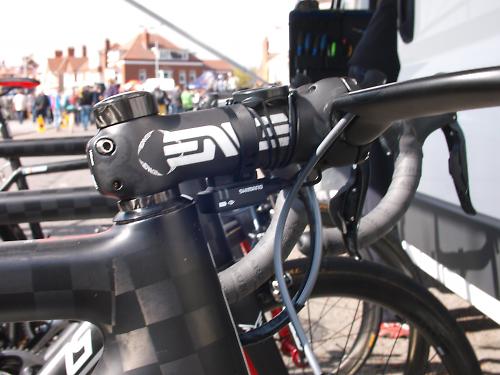




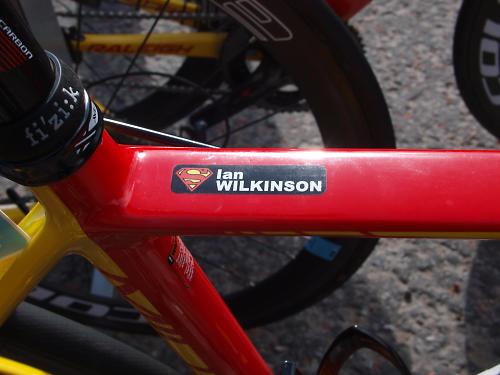
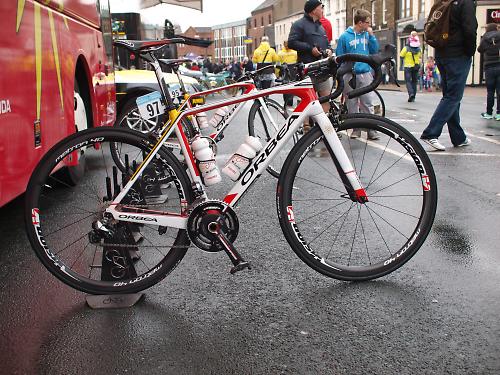

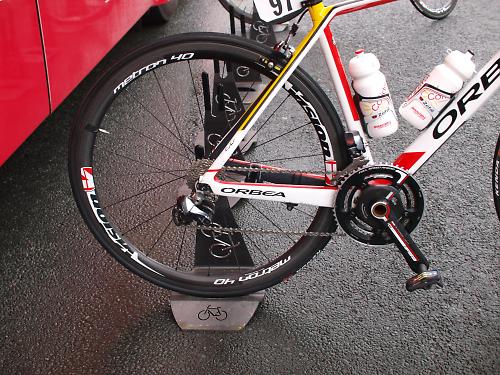


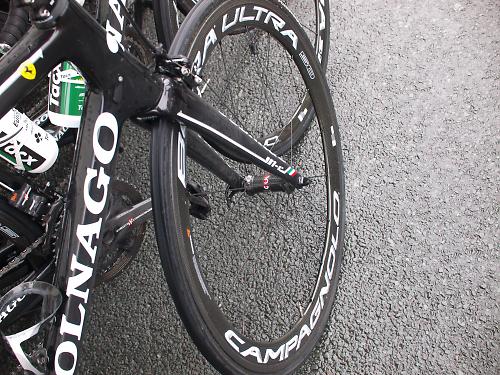
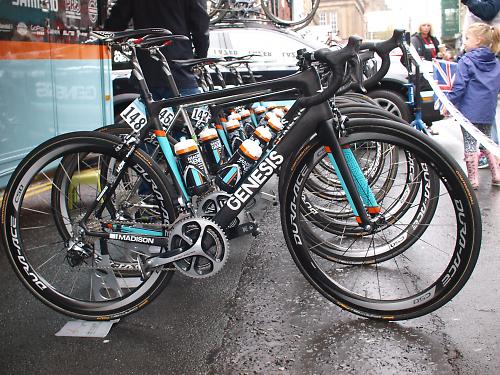

.JPG)
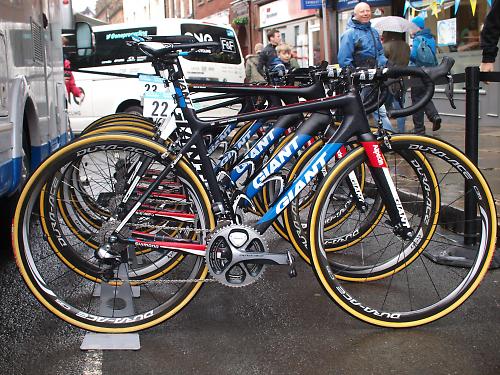









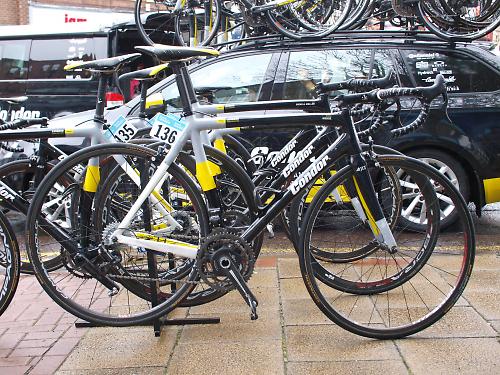



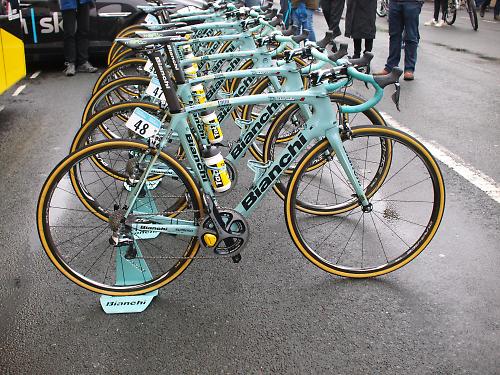




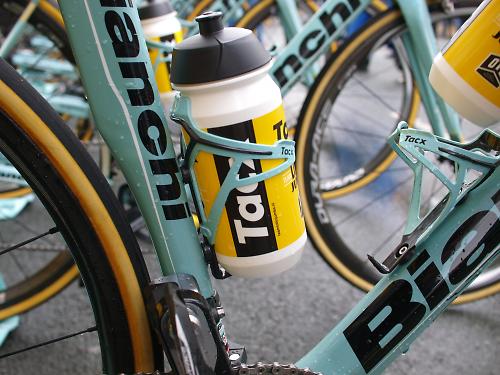
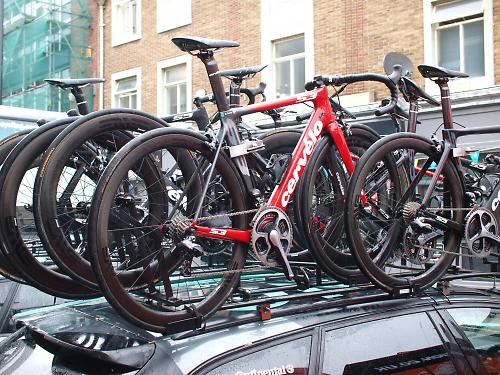

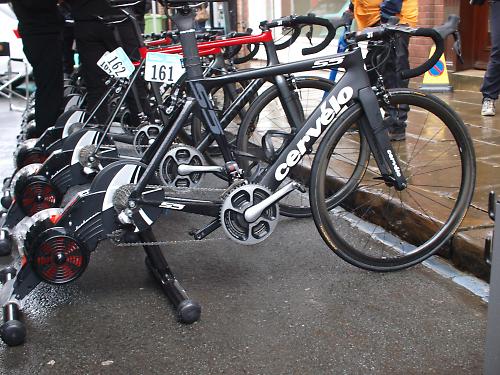


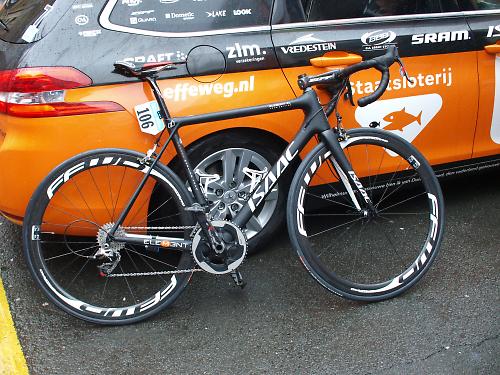


.JPG)






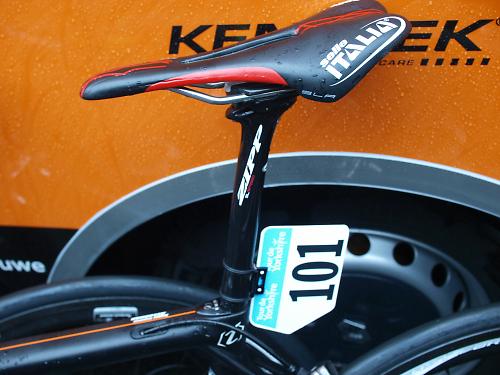

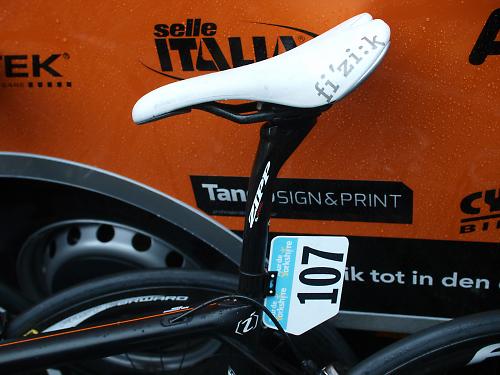


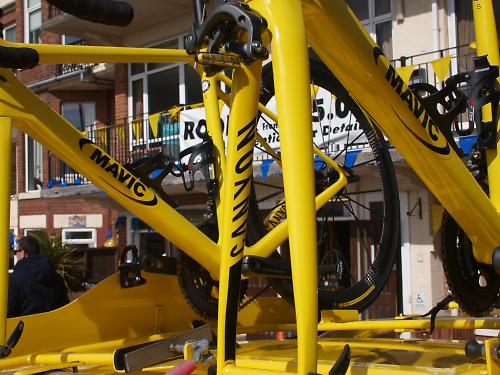
Add new comment
2 comments
Good write up. What were the four 'Rs' in 1T4R?
Lots of bike porn to salivate over (could be worse) but look forward to pics from the Giro. Stumbled accross this whilst ‘working’, the new 2016 Lapierre Xelius SL
http://www.ciclismo-espresso.com/2015/05/2016-lapierre-xelius-sl.html
The looks of which are sure to raise some varied opinions.